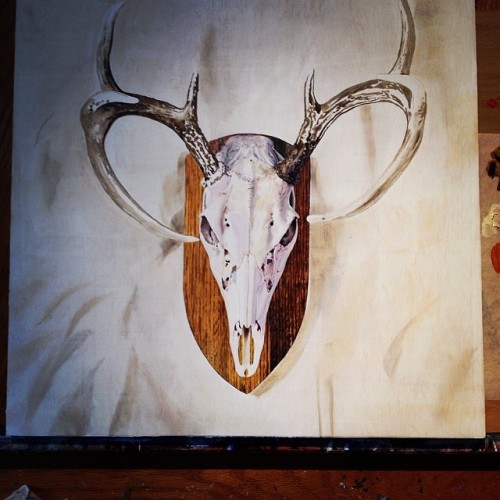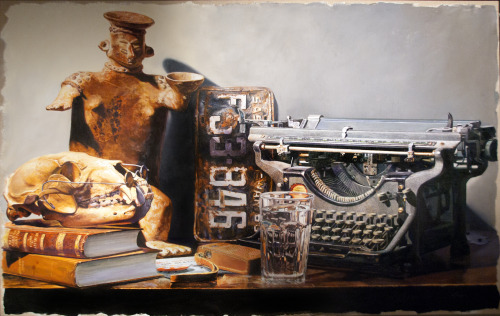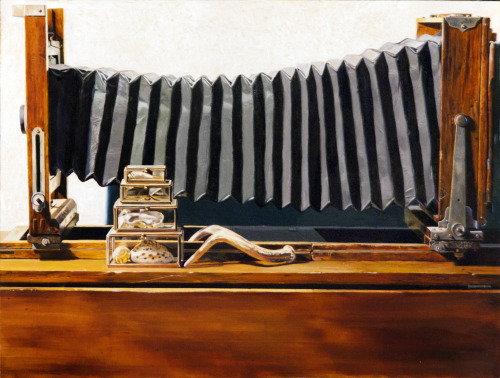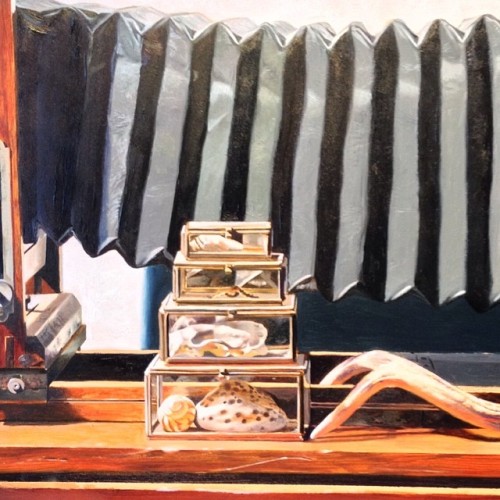A 46-year-old dynamo named Amy Cappellazzo was walking me through
the main exhibition rooms at Christie’s New York headquarters one
afternoon last year. Dark-haired and superfit in a pair of burgundy
Vince jeans and a white Malia Mills top, she kept pausing to exchange
breaking news with colleagues and clients. Her comments were lively and
hilarious, her smile all-conquering. We stopped in front of
Bea Arthur Naked, a 1991 painting by John Currin. “Do you remember her, from the TV show
Maude?”
she asked. “This is an important picture, but not necessarily a
commercial picture. Why? Because she’s naked and she has lopsided
breasts, and she’s not what men idealize. When it comes to nudity or to
anything with a flaccid penis, it’s often very hard to sell.”
Lopsided
breasts aside, record-shattering auction prices for contemporary art
have repeatedly defied logic in the last few years: The latest high is
the $142.4 million for Francis Bacon’s 1969 three-part portrait of
Lucian Freud at Christie’s in November. (The evening sale total, $691
million, was the largest ever recorded.) The auction game is like a
professional sport. In this carnival-like arena, Cappellazzo, Christie’s
chairman for postwar and contemporary development, has played a key
role in the firm’s domination of late over its archrival, Sotheby’s.
“It’s match point, every day, all the time,” said Amy, an avid skier and
tennis player, who works out three times a week with her CrossFit
trainer (in her home gym) and sits on a fitness ball in her office. At
the big evening sales she’s been a fixture at the front of the room, in
her black Saint Laurent tuxedo dress and spiky “gladiator” shoes by
Valentino, talking on one or two phones with clients she’s bidding for.
“I
try to make them feel at ease,” she told me, “and I also try to squeeze
them when I feel they need to step up and bid. I say, ‘Listen, it’s
like you saw the most beautiful woman in the world at a bar, and you
didn’t ask her for a drink. What a loser!’ Or, ‘Dude, you’ve been
waiting ten years for this, and it’s an A-plus example of what you’ve
been looking for. You’ll never miss the money, you’ll miss the piece.’ ”
Amy
took a call on her mobile. “Definitely 25 to 35, and who’s to stop it
from going to 40? . . . . Tons of interest, tons of interest.” I knew
not to ask whom she was talking to—Discretion is the fourth “D” in
auction lore, along with Death, Debt, and Divorce—but I did ask how many
clients she was working with directly, and the answer, unbelievably,
was 666 (the mark of the Devil). “Christie’s let me add myself to the
list, so it can be 667.” Those clients, from Dan Loeb and Dakis Joannou
to Marc Jacobs and Jeff Koons, can count on her instinctive feel for,
and pinpoint knowledge of, the market for more than a hundred different
artists.
In her thirteen years at the job, Cappellazzo’s
infectious energy and unconventional thinking have changed the game and
made her the public face of Christie’s contemporary throughout the
global art world. But at Art Basel Miami Beach in December, rumors that
she was about to quit Christie’s began spreading like wildfire. The
rumors turned out to be true: She is leaving to create a new future for
herself in a role that deploys her skills in inventive new combinations,
a move that has fascinating implications for how, going forward, art
will be nurtured, bought, and sold. “Amy doesn’t want to sell her soul
anymore,” a leading artist tells me when he hears the news, “and that’s a
good thing.”
Coming on the heels of the departure of Tobias
Meyer, her Sotheby’s counterpart, Cappellazzo’s exit, right after the
February sales in London, is another indication that major changes are
afoot in the overheated contemporary-art auction market. Art collecting,
once an elite passion for the few, has become a fiercely competitive
occupation for a whole new class of buyers—hedge-fund managers,
oligarchs in Russia, oil-rich sheiks and sheikas in Doha and Abu Dhabi,
freewheeling capitalists in post-Mao China. Since the recession, a lot
of these recent collectors have decided that their money is safer in art
than in stocks, and they treat it the same way, as a major asset
class—connoisseurship giving way to speculation. “The art world is in a
rapid revolution,” Amy tells me on the phone from Art Basel Miami Beach.
“There has to be a reconsideration of its structure in every single
way.”
She is hell-bent on inventing a new model, casting herself
as a kind of superagent to the art world at large, someone who will
offer full-service expertise across the board to buyers and sellers,
dealers and auction houses, museums and artists. Nothing like this
exists under one roof, and Amy is supremely confident that, with her
experience in bridging art and commerce, she is uniquely positioned to
provide it. “I want to build my own empire,” she says.
“Amy is a
very radical thinker,” says Marc Porter, chairman of Christie’s
Americas, who hired her in 2001. “She looks outside the hermetically
sealed auction house into the larger commercial world. She was
interested in the digital world, electronic commerce, and globalization
very early. She changed the paradigm.” In the last few years, the major
auction houses have taken over so much of the art dealer’s traditional
domain that you have to be a megadealer, like Gagosian, or an extremely
powerful gallerist, like Marian Goodman, Paula Cooper, or Barbara
Gladstone, to compete with them. The race for business between
Christie’s and Sotheby’s in contemporary art, by far the most lucrative
and glamorous area of the market today, is unrelenting. In order to get
superstar works for the major evening sales, both houses often have to
give up so much of their commission to the seller that their profit
margin becomes razor-thin. This is why they are being forced to find
other streams of revenue, and it’s also why Amy Cappellazzo was such an
invaluable property at Christie’s.
Her life in the past decade
has been one of constant travel, meeting with clients, assessing
artworks, speaking on panels and at seminars, attending art fairs, and
bringing in business from London to São Paulo, Los Angeles to Hong Kong.
(She gets her bespoke suits from William Cheng & Son in Hong Kong.)
“I’m a superresponsible corporate citizen,” she says, “but I’m always
going to break the rules.” Her friend Gavin Brown, the dealer and
artist, says, “She’s an anarchist. She doesn’t hold much sacred, which I
appreciate.” She’s outspoken, impulsive, and totally comfortable with
who she is. “My instincts are right a lot more than they’re wrong,” she
says.
The contemporary-art market came through the 2008
recession virtually unscathed, and since then the new buyers have driven
prices to sometimes obscene heights. Do Amy’s instincts tell her that
the market is being pushed too far?
“Not yet, but in parts it’s
getting toppy,” Cappellazzo tells me. “The great thing about the market
is, there are places where it still has room to grow.”
I’ve read
that Picasso and Warhol are “slow-growth” right now. “Picasso, agreed,”
she says, “and Warhol only if you’re talking about the
Disaster
painting that sold recently for a hundred million. Nineteen seventies
Warhols still feel cheap to me—the hammer-and-sickles and the Maos.
Another opportunity is [Sigmar] Polke, who is still a fraction of what
[Gerhard] Richter costs. You can expect Polke’s market to grow.” (His
upcoming retrospective at the Museum of Modern Art—it travels to the
Tate Modern—certainly won’t hurt.)
Asked who else she feels has
growth prospects, she cites Robert Rauschenberg and David Hockney. “In
the business world, you’d say Rauschenberg is an arbitrage buy right
now, because the prices are so much lower than the potential value. His
record at auction is about $14.5 million. Isn’t that scandalous?” For a
young collector just starting out, she advises looking at American
Minimal artists: Donald Judd, Dan Flavin, Carl Andre, Agnes Martin—“and
1970s Brice Marden.”
Growing up in Buffalo, where she was born
in 1967, Amy spoke Italian at home with her Treviso-born father. She
spoke English with her Italian mother, who was born in Canada, and with
her three older brothers. Their father was a builder, a general
contractor, who did a lot of historic-preservation work. “When I was
twelve, I said I wanted to be an art critic,” she says. “I was one of
those crazy, obnoxious, precocious children who had purpose. . . . My
goal early in life was to be a sovereign nation. My borders are pretty
protected.”
Highlights of her childhood included visits to the
Albright-Knox, one of the best small museums in the country, and
Hallwalls, an early alternative space for contemporary art, and she was
very involved with Buffalo’s lively punk-rock music scene. She was
always a good student, but never at the top of her class. “I could have
been a superb student if I’d spent more time with it,” she says,
matter-of-factly. “But I did a little cost-benefit analysis and realized
it wasn’t worth spending the extra time because it would take away from
my other kinds of development.”
We’re in my favorite Italian
restaurant, where she enchants all the waiters with her fluency in their
language. I’m trying to get a little more biographical information, but
her other worlds keep intruding. Her office calls, then a collector.
Her answers are brief and succinct. Now it’s Joanne Rosen, whom she’s
lived with for eighteen years—they married in 2009. Joanne is an
architect and civil engineer who works as a real estate developer and
consultant. They live in a West Side town house that used to be a
nunnery, and have two teenage children (a boy and a girl) and two Shih
Tzu–bichons (a boy and a girl). When Amy is not traveling, she’s home
every night for dinner with the kids before going out to art-world
events.
Joanne and Amy met in 1995 in Miami. Amy moved there
after graduating from New York University in 1989 with a degree in fine
arts, and doing graduate work in architecture at Pratt, to become a
curator at the Miami Dade College Museum of Art + Design. Multitasking
being her default mode, she also taught, wrote art criticism, and became
an art adviser. Within a few years, she was a highly visible presence
on the Miami art scene, helping Donald and Mera Rubell set up their
private art foundation and playing an important role in starting Art
Basel Miami Beach.
Christie’s Marc Porter met her in the late
nineties, when she gave him a tour of the Rubell foundation. He was
impressed by her confidence, art-historical knowledge, and ability to
talk about difficult artworks in ways that brought them to life. After
several attempts, he succeeded in 2001 in recruiting her to Christie’s,
where she and Brett Gorvy ran the worldwide Postwar and Contemporary Art
Department for the next ten years. The art market was becoming much
more global, fueled by increasing demand and by the Internet, which gave
new collectors access to all sorts of formerly privileged information.
Contemporary art and artists became the darlings of a culture of
celebrity, and auction prices soared higher and higher. The Christie’s
team was remarkably effective in taking full advantage of the expanding
market—not only through auctions but through private sales, aggressive
marketing tactics, and increasingly close relationships with major
collectors. In a 2006 interview, Amy’s somewhat tactless remark that
“we’re the big-box retailer putting the mom-and-pops out of business”
went viral and infuriated a lot of art dealers, but in retrospect it
sounds increasingly prophetic.
Two years ago, Amy changed her
status at Christie’s. She withdrew from comanaging the 40-member
department with Gorvy, freeing herself to develop new sources of
revenue. She continued to work on auctions, but for the next sixteen
months, her primary focus was on what became Christie’s major coup in
2012, beating out Sotheby’s and Gagosian to partner with the Andy Warhol
Foundation for the Visual Arts on a series of Warhol sales. This was a
big game-changer in the industry. “We basically said, ‘We’re now
representing artists’ estates,’ ” she says. The real development here is
that most of the Warhol sales are happening online—because Amy insisted
on it. Thousands of minor works, priced at less than $100,000
each—Polaroids, photo-booth strips, prints, T-shirts with Andy’s
self-portrait in a fright wig—are being made available through
e-commerce and promoted through social media. There is enough material
to keep going for the next five years. As far as Amy is concerned, this
is just the beginning of the e-commerce revolution for auctions.
Christie’s put a section of its day sale online in November, “at my
crazy, foot-stomping insistence, and it outperformed the low estimate by
a good margin. Whole auctions will be going online soon, but that won’t
happen with the big evening sales for a very long time—if ever.”
At
Christie’s, Amy was an agent of change. In her new venture as
superagent, she will be an active catalyst in the larger art-world
revolution, where all the old distinctions and boundaries—between
artistic disciplines, artists and dealers, museums and galleries,
connoisseurs and speculators, fashion and art—have become blurred. “Amy
goes in one direction only, which is forward,” says Joanne Rosen. If she
stayed at Christie’s, “she would be stuck in neutral.”
Amy and I
meet in the deserted bar at the Mark hotel on a mid-morning in late
December, just before she leaves for a one-week South American Christmas
vacation in Cartagena with Joanne and the kids. (Last Christmas, they
went to Chile.) Speculation is rife about her move, and she’s promised
to tell me more about her motives. “I wanted to know who I was without
Christie’s,” she says, “and I’m really good at pushing myself off
cliffs. I would hate it if I became one of those fat cats who didn’t
test her mettle.
“Auction houses can never fully represent a
collector’s interests,” she continues, “and I feel there’s much more
opportunity outside the auction house than inside. What I want to do is
build the best possible full-service business—not just one that makes
the most money but one that can look after you the way Bessemer Trust or
Guaranty Trust looked after your family. There’s an incredible need for
expert, long-term advice, about the works of art themselves and also
about managing this immense new asset class.”
Art collecting is
now way beyond being a private passion because the stakes have become so
big. What Amy plans to be is an adviser who can tell you how to weed
and grow your collection, identifying and selling what’s not essential
so you can afford to buy the irresistible. “Let’s say you own a
collection that you put together for $25 million over the past quarter
century, and now it’s worth between $125 million and $250 million—more
than your business, more than your houses, more than a substantial part
of your estate—if you bought right. But the collection can’t grow unless
you sell something, because the prices now are so high.”
The
news that Amy is leaving to start her own business has spurred a few
high rollers to offer her vast sums of money up front to buy for them,
but managing and building collections is only one of many departments in
her new empire. “I’m also going to be advising artists.” Established
artists, she means—not to represent them, but to offer the market-savvy
expertise she’s acquired over the years. Dealers won’t like this, but
Amy has a lot of artist friends, and just about everyone she’s ever
worked with wants to work with her again.
Just ask Christie’s Marc Porter. “If you can convince her to come back,” he says, “let me know.”
http://m.vogue.com





 http://lov.so/anatomy-of-an-angel/
http://lov.so/anatomy-of-an-angel/









